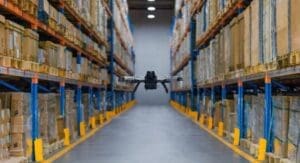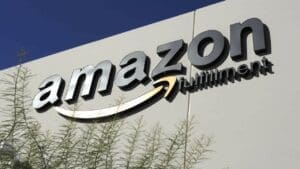 Early this week, basketball legend and all-around great guy Bill Walton passed away after a battle with cancer. Tributes came pouring in from past and present NBA players, broadcasters, fans, and the surviving members of the Grateful Dead. While that last bit may surprise you, Bill Walton was one of the biggest Deadheads around. He first saw the band in the late-60’s while in high school, and would catch every show he could. In the end, he went to more than 1,000 Dead shows, and could usually be found in the tenth row, dead center, with his eyes closed and hands up in the air. Not surprisingly, he was pretty easy to spot, what with being 7’1”. In 1985, after signing with my hometown Boston Celtics, he took Larry Bird, Robert Parrish, Kevin McHale, and a host of others on a field trip to catch a Dead show at the Worcester Centrum. None of the other players had been to a Dead show before, but Walton opened their eyes to how a band can play as a cohesive unit through twists and turns on the stage the same way the Celtics could on the court. And now on to this week’s logistics news.
Early this week, basketball legend and all-around great guy Bill Walton passed away after a battle with cancer. Tributes came pouring in from past and present NBA players, broadcasters, fans, and the surviving members of the Grateful Dead. While that last bit may surprise you, Bill Walton was one of the biggest Deadheads around. He first saw the band in the late-60’s while in high school, and would catch every show he could. In the end, he went to more than 1,000 Dead shows, and could usually be found in the tenth row, dead center, with his eyes closed and hands up in the air. Not surprisingly, he was pretty easy to spot, what with being 7’1”. In 1985, after signing with my hometown Boston Celtics, he took Larry Bird, Robert Parrish, Kevin McHale, and a host of others on a field trip to catch a Dead show at the Worcester Centrum. None of the other players had been to a Dead show before, but Walton opened their eyes to how a band can play as a cohesive unit through twists and turns on the stage the same way the Celtics could on the court. And now on to this week’s logistics news.

 Ericsson has successfully completed a proof-of-concept drone project at its USA 5G Smart Factory in Lewisville, Texas, demonstrating the use of an autonomous drone to perform indoor missions. The company used the drone to complete autonomous inventory checks of the warehouse’s higher shelves. Ericsson said the project showcases the potential of drones for autonomous barcode scanning and inventory management. The drone is powered by a Qualcomm processor and comes equipped with indoor-optimized flight control, 5G-connected Nest docking station and live video streaming cameras. It can also connect to Ericsson’s own end-to-end 5G network, with the company saying the project marks a “new milestone” in integrating 5G technology into industrial processes.
Ericsson has successfully completed a proof-of-concept drone project at its USA 5G Smart Factory in Lewisville, Texas, demonstrating the use of an autonomous drone to perform indoor missions. The company used the drone to complete autonomous inventory checks of the warehouse’s higher shelves. Ericsson said the project showcases the potential of drones for autonomous barcode scanning and inventory management. The drone is powered by a Qualcomm processor and comes equipped with indoor-optimized flight control, 5G-connected Nest docking station and live video streaming cameras. It can also connect to Ericsson’s own end-to-end 5G network, with the company saying the project marks a “new milestone” in integrating 5G technology into industrial processes.
Toyota plans to develop new, smaller engines that can run on carbon-neutral fuels, the latest move by the world’s largest carmaker to navigate the industry’s bumpy transition away from conventional internal combustion engines. The Japanese automaker said that to help decarbonize such engines, it will make smaller versions of them, compatible with various fuels that it says will produce net zero carbon-dioxide emissions. Toyota has been taking what it calls a multi-pathway approach in adopting alternatives to conventional engines powered by emissions-generating fossil fuels. It is offering consumers a range of vehicles, including hybrid-electric and hydrogen-powered cars, in addition to electric ones.

 With the Atlantic Hurricane Season beginning on June 1, meteorologists are warning of a threat of rapidly intensifying storms this summer, whose quick growth could leave families, businesses, and government leaders with less time to react and prepare, according to AccuWeather. Rapidly intensifying tropical storms and hurricanes pose a major threat to life and property along the Atlantic and Gulf of Mexico coastlines, as those weather systems could gain wind intensity of at least 35 mph in 24 hours or less, the weather service said. That short time frame is a problem because many large coastal cities require 48 to 72 hours to announce mandatory evacuations, organize shuttles, and activate highway contraflow for evacuation traffic. The forecast is inspired by certain “red flags” being tracked by AccuWeather meteorologists, including: the switch from an El Nino to a La Niña pattern, record-shattering warm ocean temperatures in the Main Development Region at the surface, and warm waters at deep depths.
With the Atlantic Hurricane Season beginning on June 1, meteorologists are warning of a threat of rapidly intensifying storms this summer, whose quick growth could leave families, businesses, and government leaders with less time to react and prepare, according to AccuWeather. Rapidly intensifying tropical storms and hurricanes pose a major threat to life and property along the Atlantic and Gulf of Mexico coastlines, as those weather systems could gain wind intensity of at least 35 mph in 24 hours or less, the weather service said. That short time frame is a problem because many large coastal cities require 48 to 72 hours to announce mandatory evacuations, organize shuttles, and activate highway contraflow for evacuation traffic. The forecast is inspired by certain “red flags” being tracked by AccuWeather meteorologists, including: the switch from an El Nino to a La Niña pattern, record-shattering warm ocean temperatures in the Main Development Region at the surface, and warm waters at deep depths.
The Covid pandemic pushed e-commerce to a level that no one could have expected. But as things have returned to a sense of normalcy, the pendulum also swings back. According to a new report from CBRE, the majority of street retail districts appear to be thriving with foot traffic in prime trade areas expected to fully recover to pre-pandemic levels by Q3 2024 and surpass those levels by 2025. By Q4 2023, foot traffic in 10 prime trade areas tracked by Placer.ai had reached 81% of 2019’s levels, demonstrating a strong recovery. During the pandemic, retailers took advantage of low rents to lease more space. Now, investors are benefiting from rising rents in prime trade areas, with an increase of 9% in the Americas and 5.8% globally since 2021.

 Amazon’s post-pandemic pullback in logistics expansion is over as the company turns competition for consumer spending into a battle over real estate. The e-commerce market leader is buying up industrial property and restructuring its sprawling distribution network as it looks to speed up package delivery and cut shipping costs. The changes are aimed at setting up Amazon to better compete with the nation’s largest retailer, Walmart, and low-price online upstarts Shein and Temu. Amazon so far this year has leased, bought or announced plans for more than 16 million square feet of new warehouse space in the U.S., according to Canadian supply-chain consulting firm MWPVL International. That adds to the company’s existing footprint of roughly 413 million square feet of industrial real estate across North America as of Dec. 31, according to company filings.
Amazon’s post-pandemic pullback in logistics expansion is over as the company turns competition for consumer spending into a battle over real estate. The e-commerce market leader is buying up industrial property and restructuring its sprawling distribution network as it looks to speed up package delivery and cut shipping costs. The changes are aimed at setting up Amazon to better compete with the nation’s largest retailer, Walmart, and low-price online upstarts Shein and Temu. Amazon so far this year has leased, bought or announced plans for more than 16 million square feet of new warehouse space in the U.S., according to Canadian supply-chain consulting firm MWPVL International. That adds to the company’s existing footprint of roughly 413 million square feet of industrial real estate across North America as of Dec. 31, according to company filings.
If looming labor negotiations at East and Gulf Coast ports break down before the Sept. 30 deadline, shippers may divert some cargo away from the East Coast, Port of Los Angeles Executive Director Gene Seroka said in a media briefing. Importers and exporters have told Seroka that they’ve “shifted fractionally back towards the West Coast” due to a myriad of issues, including security concerns regarding the Red Sea, previous drought restrictions at the Panama Canal and East Coast labor negotiations. The port director said there hasn’t been “a wholesale shift,” however, estimating between 2% to 5% of shippers’ cargo has been moving from East and Gulf Coast gateways back to the West Coast.
Artificial intelligence has great potential to propel supply chain efficiencies, sustainability efforts, and regulatory compliance despite only limited use by companies today, according to research by Inspectorio. The survey found that 82% of supply chain professionals indicate technology advancements will have a significant impact on the supply chain over the next five years. Specifically, innovations in AI and machine learning have led to notable advancements in quality assurance, predictive analytics, and operational efficiency, supporting improved decision-making and transparency. Despite this, 77% of respondents indicated that AI is not yet integrated into their supply chains. The current lack of AI-powered tools was cited by 47% of respondents as the primary barrier, highlighting a significant gap in the market for industry-specific AI solutions. Restrictive IT policies were cited as the second largest barrier to adoption (22%).
The rollout of the Biden administration’s CHIPS Act award money has so far focused on providing major awards for major companies, with just four leading-edge semiconductor manufacturers receiving the lion’s share of the $33 billion that has been allocated to this point. Now, with $6 billion remaining, the focus is shifting to sending smaller awards to smaller companies—dozens of them, up and down the supply chain. The goal, government officials and industry experts say, is to leverage the remaining grant money to lure in as much private investment as possible, while boosting supply chain resilience and economic security by funding U.S.-based facilities in areas like materials and packaging.
That’s all for this week. Enjoy the weekend and the song of the week, Bill Walton’s favorite Dead tune, Fire on the Mountain.




















